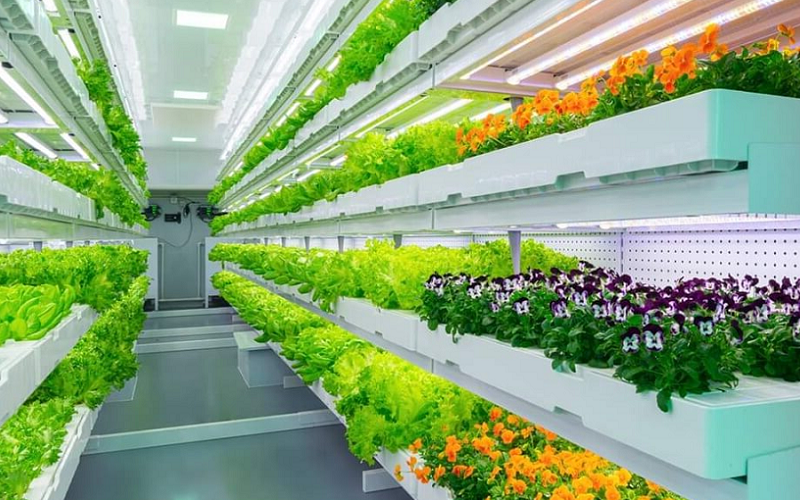Indoor gardening is a rapidly growing trend in agriculture that involves growing plants indoors in a controlled environment. The primary goal of indoor gardening is to provide the ideal growing conditions for plants, regardless of external weather conditions. This can result in increased crop yields, reduced pest and disease issues, and a wider variety of crops that can be grown year-round.
What Is Indoor Garden Farming?
Indoor garden farming is the practice of growing plants inside a building, typically in a controlled environment, with the aim of providing the ideal growing conditions for the plants. This type of farming allows for year-round cultivation, regardless of weather conditions, and can range from small tabletop herb gardens to large-scale commercial operations using hydroponic systems.
Indoor garden farming requires specialized equipment, such as grow lights and climate control systems, and provides a way to grow fresh, healthy produce in urban areas or in climates with challenging growing conditions.
Indoor gardening requires specialized equipment such as grow lights, air filters, and climate control systems, which can be costly to purchase and maintain. The plants grown in indoor gardens typically have higher nutrient requirements and may need regular fertilization.
Indoor gardening can be a rewarding hobby or an efficient way to grow fresh, healthy produce in urban areas or in climates with challenging growing conditions.
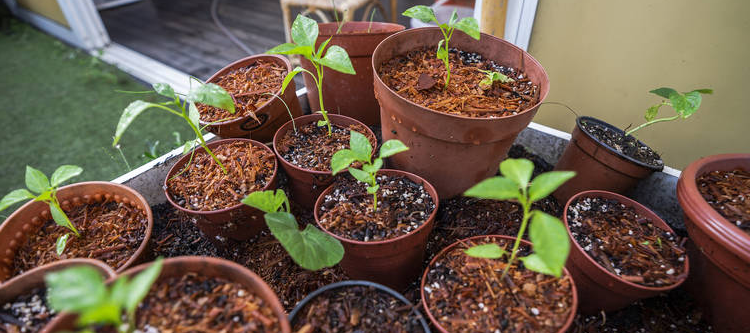
Pros and Cons of Indoor Garden Farming
Indoor garden farming has both advantages and disadvantages. One advantage is the ability to control the growing environment, including factors such as temperature, humidity, light, and nutrient levels. However, indoor garden farming also has disadvantages. The start-up costs can be high, as significant investments are required for equipment, lighting, and other infrastructure.
Pros of Indoor Garden Farming
Indoor gardens can produce crops year-round, regardless of weather conditions. Another benefit is space efficiency, as indoor farming can increase crop yields using vertical farming techniques in a smaller amount of space compared to traditional outdoor farming.
- Controlled Environment: Indoor farming provides the ability to control factors such as temperature, humidity, light, and nutrient levels, allowing for greater consistency and predictability in plant growth and production.
- Year-Round Production: Indoor gardens can produce crops year-round, regardless of the weather conditions outside.
- Space Efficiency: Vertical farming techniques can increase crop yields in a smaller amount of space compared to traditional outdoor farming.
- Pesticide-Free: Indoor farming eliminates the need for pesticides, providing a safer and healthier option for consumers.
- Reduced Water Usage: Indoor farming typically uses less water than traditional outdoor farming methods.
Cons of Indoor Garden Farming
Indoor farming is energy-intensive, with higher energy costs to maintain the controlled environment. Technical expertise is also required to manage the equipment and maintain optimal growing conditions.
- High Start-Up Costs: Indoor garden farming requires significant upfront investments in equipment, lighting, and other infrastructure.
- Energy-Intensive: Indoor farming requires significant amounts of energy to maintain the controlled environment, leading to higher energy costs.
- Technical Expertise: Indoor garden farming requires specialized knowledge and skill to manage the equipment and maintain the optimal growing conditions.
- Limited Crop Variety: Currently, indoor farming is mainly suited for growing certain crops like leafy greens, herbs, and microgreens.
- Pests and Diseases: Despite the absence of pesticides, indoor farms are still vulnerable to pests and diseases, which can be difficult to control in a confined environment.
Type of Indoor Garden Farming
Indoor gardening can range from small tabletop herb gardens to large-scale commercial operations, and can be accomplished through various methods, including soil-based, hydroponic, and aeroponic systems.
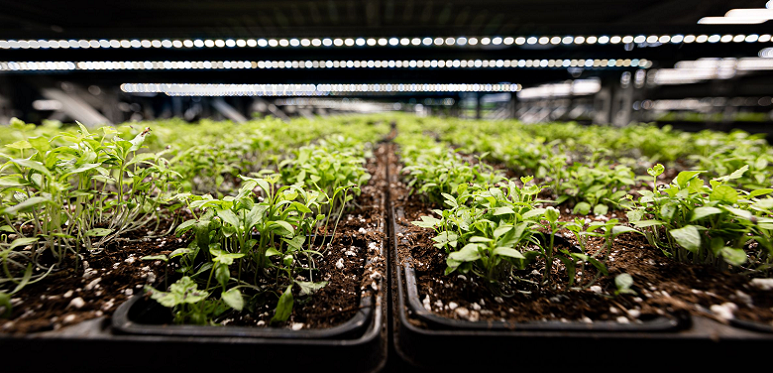
Soil-Based Indoor Gardening
Soil-based indoor gardening involves growing plants indoors using soil as the primary medium for plant roots to grow in. The soil provides essential nutrients and water to the plants, allowing them to grow and flourish. Indoor gardening provides a controlled environment that allows for year-round growing, regardless of the weather outside.
Some common crops grown in soil indoors include herbs, vegetables, and flowers. To grow plants in soil indoors, one needs to provide proper lighting, ventilation, and temperature control, as well as appropriate watering and fertilization. Soil-based indoor gardening can be done in containers or pots, raised garden beds, or hydroponic systems with soil as the root medium.
By following the below guidelines, indoor gardeners can successfully grow healthy plants in soil indoors. Soil-based indoor gardening is a great way to enjoy fresh herbs, vegetables, and flowers all year round.
- Soil selection: It is important to select a high-quality soil that is specifically formulated for indoor gardening. The soil should have the right balance of nutrients and pH levels to support healthy plant growth. Potting soil or seed-starting mix is a good choice for indoor gardening.
- Lighting: Plants need adequate light to grow. In the absence of natural sunlight, indoor gardeners can use artificial light sources such as fluorescent lights, LED lights, or grow lights. The lights should be positioned close to the plants and run for at least 8-12 hours a day.
- Watering: Over-watering is a common issue in indoor gardening. The soil should be allowed to dry out partially between waterings to prevent root rot. A moisture meter can be used to monitor the soil moisture levels.
- Fertilization: Indoor plants require regular fertilization to maintain healthy growth. A balanced, water-soluble fertilizer can be used every 2-4 weeks, following the manufacturer’s instructions.
- Pest control: Indoor gardening can also attract pests such as spider mites, aphids, and whiteflies. Regular inspections, proper ventilation, and the use of organic pest control methods can help prevent and control pest infestations.
- Ventilation: Good air circulation is essential for indoor gardening. This helps to prevent mold, mildew, and other problems caused by stagnant air. A fan can be used to provide air circulation or a window can be opened to allow for cross-ventilation.
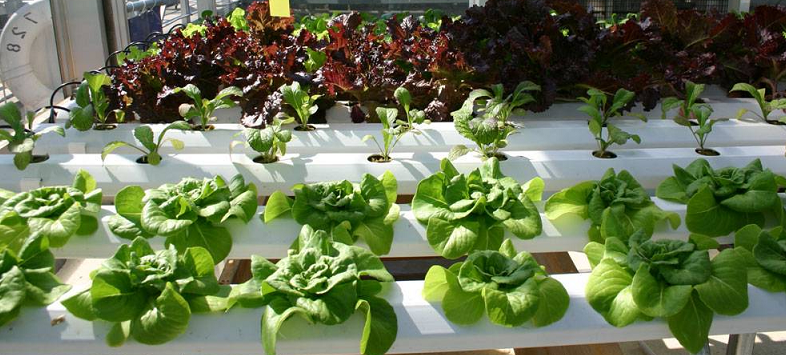
Hydroponic Indoor Gardening
Hydroponic indoor gardening is a method of growing plants without soil, instead using a nutrient-rich water solution as the growing medium. The water solution provides the plants with all the nutrients they need to grow, eliminating the need for soil. This type of indoor gardening is highly efficient, as the water solution can be easily monitored and adjusted to provide the optimal growing conditions for each plant.
With careful attention to the following point, indoor gardeners can achieve successful and healthy plant growth in a hydroponic system.
- Types of hydroponic systems: There are several different hydroponic systems that can be used for indoor gardening, including deep water culture, nutrient film technique, aeroponics, and ebb and flow. Each system has its own advantages and disadvantages, and it is important to choose the right system for the plants being grown.
- Nutrient solution: The nutrient solution used in hydroponic systems is carefully balanced to provide the plants with all the essential nutrients they need to grow. The solution can be purchased pre-made or made at home using a hydroponic nutrient formula.
- Lighting: Just like soil-based indoor gardening, hydroponic indoor gardening requires adequate lighting to support plant growth. Artificial light sources such as fluorescent lights, LED lights, or grow lights can be used to supplement or replace natural sunlight.
- Water and pH management: Hydroponic systems require regular monitoring and adjustment of the water and pH levels in the nutrient solution. Too high or low pH levels can impact plant growth and health, so it is important to regularly test and adjust the solution as needed.
- Pest control: Pests can also be a problem in hydroponic indoor gardening, but the closed environment of a hydroponic system can make it easier to control and eliminate pests. Neem oil, diatomaceous earth, and beneficial insects are some of the natural pest control methods that can be used in hydroponic indoor gardening.
- Maintenance: Regular cleaning and maintenance of the hydroponic system is important to ensure optimal plant growth and health. This includes cleaning the system and changing the nutrient solution on a regular basis.
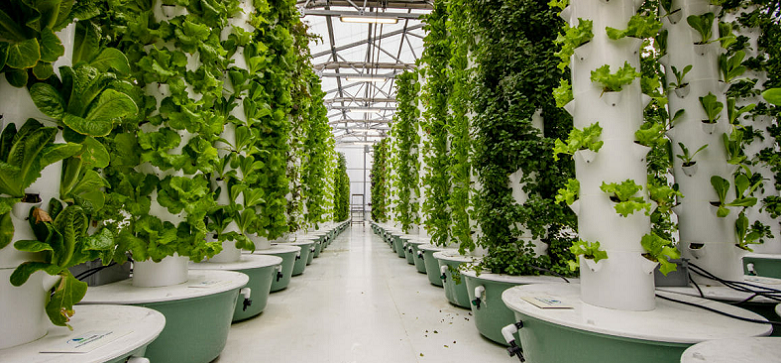
Aeroponic Indoor Gardening
Aeroponic indoor gardening is a type of hydroponic indoor gardening where plants are grown in a mist or spray of nutrient-rich water instead of soil or a water-based growing medium. The roots of the plants are suspended in air and misted with the nutrient solution at regular intervals, providing the plants with all the nutrients they need to grow.
Aeroponic indoor gardening is a highly efficient and effective way to grow plants indoors, but it does require a higher level of care and maintenance compared to other forms of indoor gardening. With careful attention to the following tips, indoor gardeners can achieve successful and healthy plant growth in an aeroponic system.
- Efficiency: Aeroponic indoor gardening is considered to be one of the most efficient forms of hydroponic indoor gardening, as the misting of the roots allows for rapid and efficient uptake of nutrients by the plants. This can result in faster growth and higher yields compared to other hydroponic systems.
- Lighting: Just like other forms of indoor gardening, aeroponic indoor gardening requires adequate lighting to support plant growth. Artificial light sources such as fluorescent lights, LED lights, or grow lights can be used to supplement or replace natural sunlight.
- Nutrient solution: The nutrient solution used in aeroponic indoor gardening should be carefully balanced to provide the plants with all the essential nutrients they need to grow. The solution can be purchased pre-made or made at home using a hydroponic nutrient formula.
- Water and pH management: Regular monitoring and adjustment of the water and pH levels in the nutrient solution is important for the health and growth of the plants in an aeroponic system. It is important to regularly test and adjust the solution as needed.
- Maintenance: Regular cleaning and maintenance of the aeroponic system is important to ensure optimal plant growth and health. This includes cleaning the system, changing the nutrient solution, and ensuring proper operation of the misting system.
- Cost: Aeroponic indoor gardening systems can be more expensive compared to other hydroponic systems due to the additional components required for the misting system, such as pumps, nozzles, and tubing. However, the higher efficiency and potential for higher yields can offset the initial cost over time.

